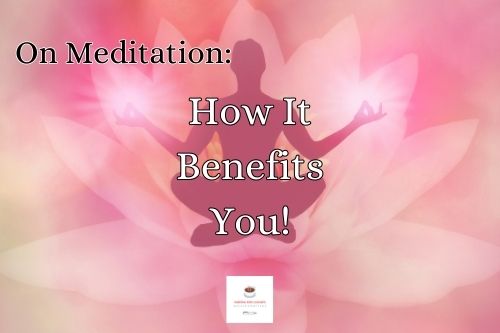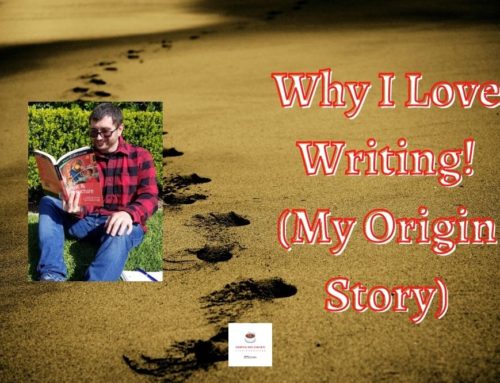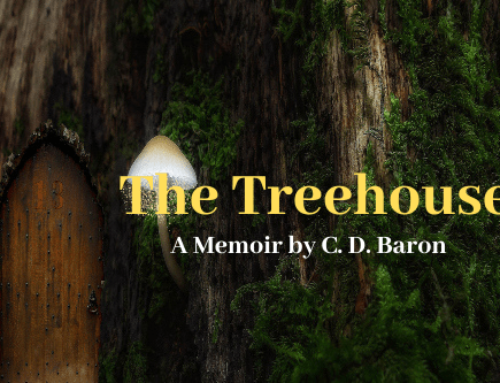I am a big believer in the power and benefits of meditation and how they should be incorporated into everyone’s writing routine. I always start a writing session with an entrance meditation and it instantly clears my mind putting me in the state to write.
Today, I share with you my essay “On Meditation” talking about the spiritual and mental benefits of taking up a meditative practice, and how that practice can turn into everlasting mindfulness.
On Meditation
Each passing moment changes and flows like a stream runs down a bank. The water is in no more control than a leaf falling off a branch, dancing through the wind, until it ceases to fall. We, too, are the leaf falling through life, although we attach to our dance, assuming the dance is our purpose. We give meaning to how we fall, when, in reality, we observe.
We are everlasting awareness. No matter what one is doing (working, running, playing, dancing, writing, and so forth,) one thing always remains the same. The awareness one calls “I” (Sluyter 2015, 1).
The “I” awareness, as Dean Sluyter calls it – also known as one’s ego – is the identity we, as humans, attach – telling us that we are fantastic at one thing, or bad at another. Ego compares our individuality to others, saying so-and-so is more successful because of reason x, y, or z. It is what we believe ourselves to be in our daily lives (Fresco 2017, 25).
When one asks, “Who am I?” it is the ego that usually answers.
My ego tells me that I am a writer. It also says I am a depressed, anxious mess struggling to find my place. Both are equally true, as they are false.
One identity does not have to take precedence over the other, and neither has to be an identity at all. Through the act of meditation, one can sift through the ego-mind and decipher the ego from their true-self, (the self without ego.)
Simplistic Meditation

Meditation, as a practice in its core, is simple. It is the act of being aware in the present moment, allowing one to turn off one’s ego-mind and be. Like the leaf falling off a branch, meditation is about swaying through the flow of life.
As Steve Hagen puts in his book, “meditation is not trying to do anything” (Hagen 1997, 108). It is different from doing nothing because by doing nothing, one is doing something. Not trying to do anything is simply existing. By partaking in meditation, one can liberate one’s mind from the ego, essentially ending one’s suffering.
For years, I have attached to many labels: disabled White/ Hispanic male, depressed, anxious, nerd, ugly, writer, creative, and many more throughout my life — Some things more harmful than others, and some I still hold onto despite their harm. By attaching to these identities, I generate them to reality.
As Descartes elegantly puts, “I think, therefore I am,” ergo my ego is manifesting said identities. I believe I am depressed, so that is what I experience (barring those who have chemical imbalances and need extra help via medication).
Our mind is like the light of a candle, and our surroundings, environment, what we feed our brain, the wind. As the wind easily manipulates a candle, so too do outside factors affect our mind (Fresco 2017, 16).
In meditation, I see the thoughts, but I do not attach to them. I acknowledge the existence of the idea, and as a cloud floats in the sky, I watch it pass. It is connecting with my “basic beingness,” my source awareness, my true-self (Sluyter 2015, 16). In meditation, one can truly put an end to one’s ego-identities.
The Benefits of Meditation
Meditation is proven to end anxiety and depression (in some cases). It improves our heart, memory, reduces stress, and leads to enhanced problem-solving skills (Fresco 2017, 22).
In my own life, when I meditate, I notice a calmer mind. My thoughts are not running a thousand miles per hour; I can stop and realize nothing is as daunting as it seems. I can be running late to work, and know I will be okay.
Before meditation, and even still on occasion, I feel stressed over the most minute things. I spill a glass of water, and it is the end of the world. I forget to offer my fiancée fries before they are gone, and I am the worst to-be-husband. My ego convinces me of the importance of these mistakes.
Our ego puts us in a confused state of mind that binds us to our beliefs, our suffering (Hagen 1997, 2). It is through meditation that one can quiet this confused state. There are many different forms of meditation, and no one way is right. What works for one may not work for another, but the key is to let go of the expectation of perceived benefits. In expectation, is the ego.
How to Meditate

Sluyter offers multiple techniques in his book that include: meditating on a single breath, on sensation, on the heart center, meditating into sleep, and many more (Sluyter 2015). One can also do walking meditations and sound meditations.
Lucid dreaming (the state of being aware while dreaming) and astral projection (a state where you leave your body and are in complete control of your spirit) are also forms of meditation.
I combine multiple techniques into my meditation. I use Sluyter’s meditation on a single breath where you experience breathing in, pausing, and breathing out. You do it as many times as you want, experiencing a single breath each time (Sluyter 2015, 18).
I combine it with a sound meditation where I listen to binaural beats to ease my brain into a more relaxed state as I focus on my breath. I sit, with my headphones on, and breathe in, feeling the air rush against my nose as it enters my body. I feel as I hold my breath – my stomach tightens as my diaphragm holds the air. And I exhale, letting all the air out, feeling it leave through my nostrils.
I repeat, and thoughts begin to pop up. I remember work for class – I feel anxious about healthcare – It is all okay. I observe and watch it go as naturally as it came. As soon as I notice the thought, I return to the feeling of the breath.
It is in the practice of meditation that one can learn to quiet one’s mind (one’s ego) in one’s daily routine. The practice at first may only help in the moment of meditation, but in constant training and dedication, it can transcend the act of meditation into mindfulness.
References
Fresco, Koi. The Meditation Manual. N.C.: Koi Fresco, 2017.
Hagen, Steve. Buddhism plain and simple. New York: Harmony Books, 1997.
Sluyter, Dean. Natural Meditation: A Guide to Effortless Meditative Practice. New York: The Penguin Group, 2015.
C. D. Baron
Latest posts by C. D. Baron (see all)
- What is The Novella? Why You Must Write One to Improve Your Skills! - 03/21/2021
- Wake Up! A Short Story (Work in Progress) - 02/07/2021
- My Top 5 Favorite Reads of All Time (So Far) - 01/24/2021




